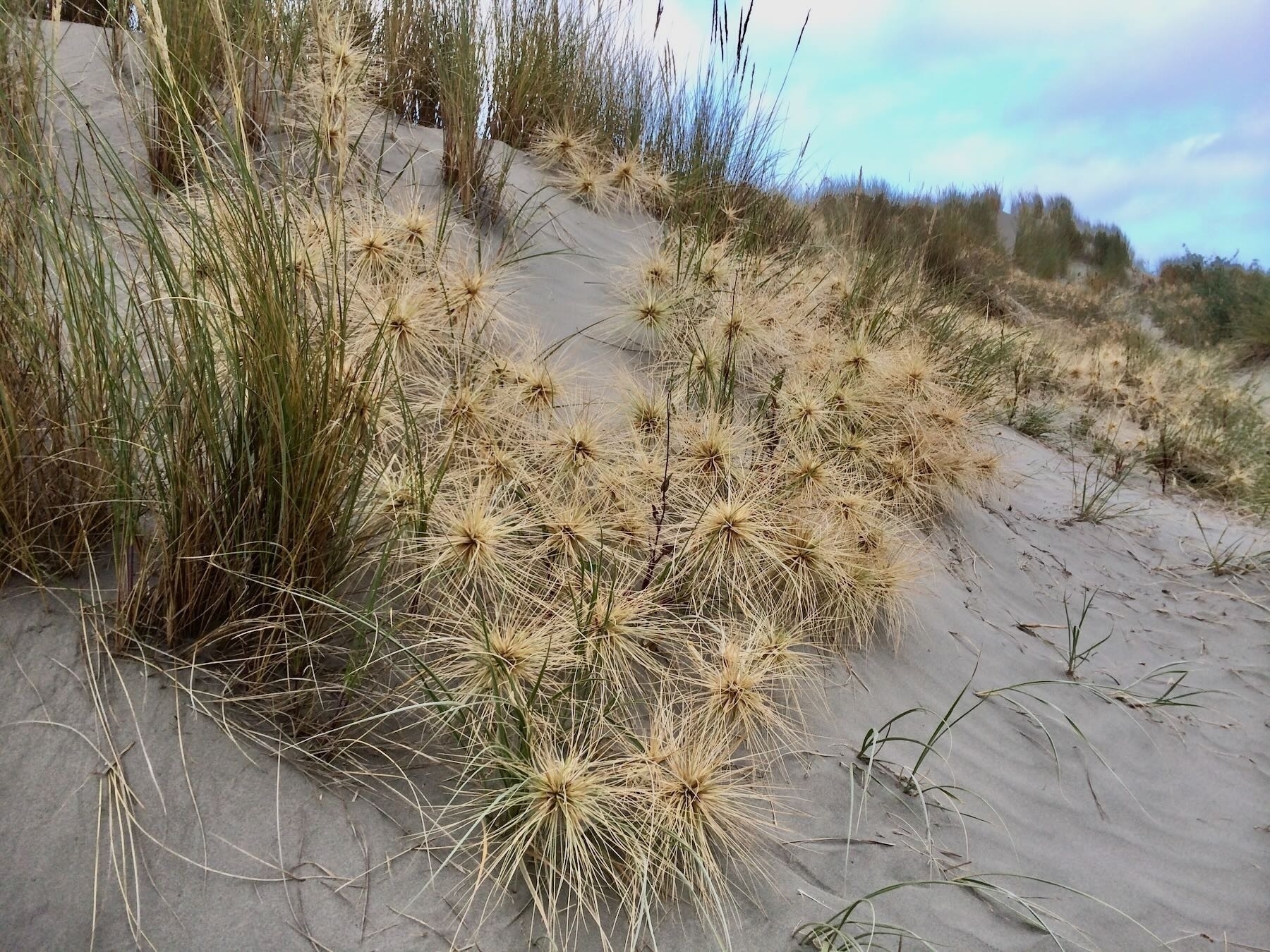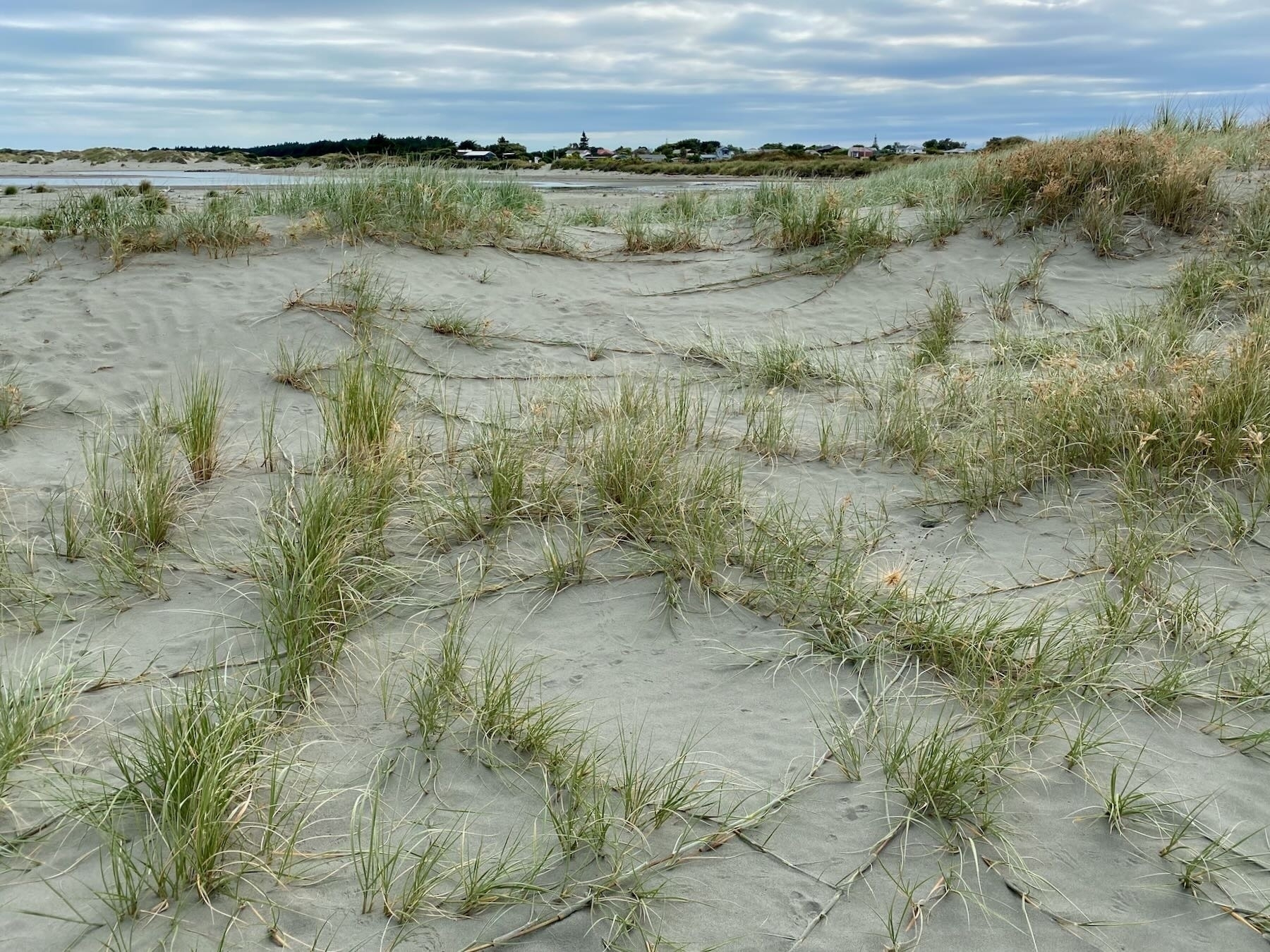
Did you know that native Spinifex and Pīngao grasses help hold sand and build the dunes, while Marram Grass was planted by Europeans because cows would eat it? In times gone by, before we had a robust roading system, cows (and other stock) were often driven along the beaches.
In recent years Horowhenua District Council have provided thousands of spinifex for local volunteers to plant at Waikawa Beach.
The 13 minute Radio NZ Our Changing World episode, Growing dune plants a challenging passion (28 January 2021), is really interesting. Each year, horticulturist Jo Bonner and the team at Coastlands Plants in Whakatāne grow 200,000 spinifex plants and 100,000 pingao plants. And they are probably the source for our spinifex.

The most important thing about the foredune plants is their ability to fix the dunes after a large storm event,” says Jo.
The key, in the case of spinifex, is long vigorous runners which grow towards the sea and quickly cover foredunes ravaged by storm swells. The hairy plants then trap wind-blown sand which rebuilds a gentle dune. …
One issue facing spinifex and pingao has been a decline in seed fertility.
“We used to get 50–80 seeds from each spinifex seed head,” says Jo, referring to the iconic spiky spinifex seed head that you see rolling down the beach on a sunny day. “Nowadays it can be as little as 15 seeds per head.” …
She also says that it’s important not to walk or drive over sand dune plants, as it’s very easy to damage them. And destroying the plants damages precious sand dunes which are playing an increasingly important role in protecting our coasts from the impact of sea level rise.